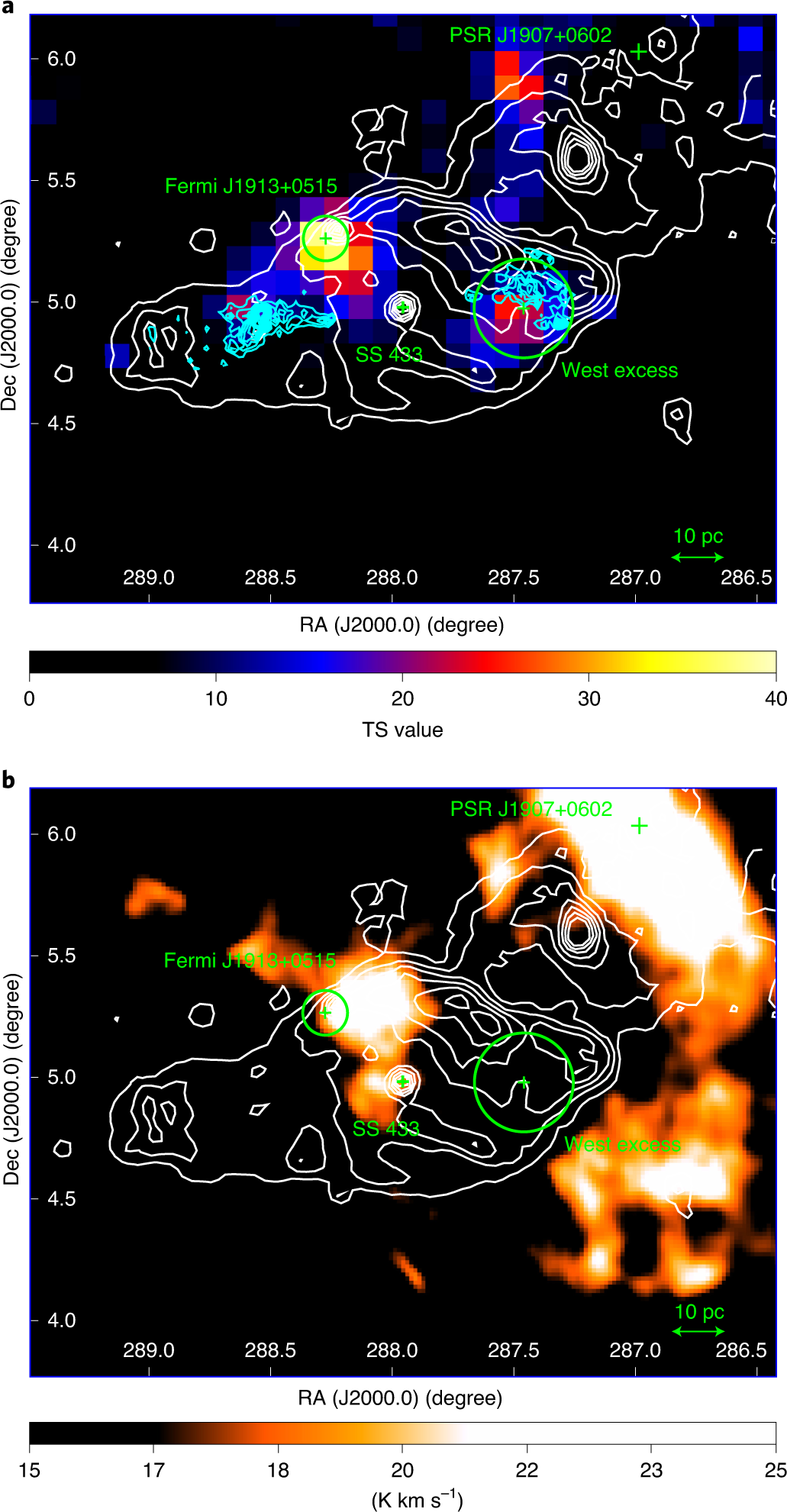Gamma-Ray Heartbeat Powered by the Microquasar SS 433
Using the Fermi and Arecibo data, astronomers from Germany, Spain, China, and the U.S. investigated the unique microquasar SS 433 in the Milky Way. The system consists of a 30 Msun giant star and a 10-20 Msun Black Hole. Researchers found that a gamma-ray signal with a period of 162 days is located at the position of a gas enhancement (Fermi J1913+0515), which is about 100 light years away from SS 433.
How the black hole can power the gas cloud’s high-energy emission is unclear. But direct illumination by the relativistic jet is unlikely because the gas cloud does not lie in the jet cone. An alternative explanation is probably that the fast protons produced by the jets or the accretion disk hit the nearby gas cloud. Further observations as well as theoretical studies are still required to explain the multi-wavelength features, which is very helpful to shed light on our ideas on cosmic-ray production and propagation in the ISM.

Fig. 1 Gamma-ray and atomic cloud images of the SS 433 region. (Image by SU Yang)
The paper was published in Nature Astronomy by Dr. Jian Li, Humboldt Fellowship at Deutsches Elektronen Synchrotron (DESY). Dr. Yang Su at Purple Mountain Observatory also contributed to the research. This work was funded by the NSFC 11733009.